This post may contain affiliate links. If you use these links to buy something we may earn a commission. Thanks.
Each mushroom has its own unique selling point and no matter the type of mushroom you decide to grow and sell, your market is likely to buy and try it based on a great description and visual!
One particular gourmet mushroom, however, surpasses all others in sales for a few reasons.
In general, small-scale mushroom growers agree that lion’s mane is the easiest to sell. Lion’s mane mushrooms are white, round, tasty, and beneficial to our brains. To the buyer, these features feel clean, familiar, versatile, irresistible, and anti-aging—traits everyone wants from food.
The main takeaway message here is that the easiest mushroom to sell is a mushroom with features that sell itself! And once a buyer tastes a mushroom for the first time, the flavor and texture will keep them coming back for more, or not.
Lion’s mane is also a two-in-one edible and medicinal mushroom, and once discovered, is hard to stop buying!
Related: What it Costs to Grow Mushrooms (Indoor vs Outdoor)
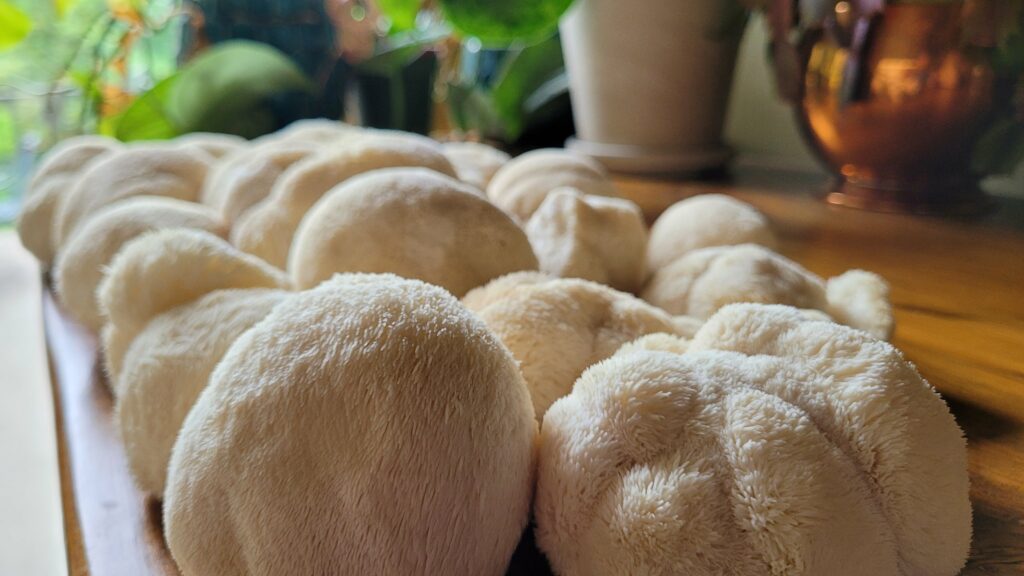
Below, I’ll cover the unique selling points of each best-selling mushroom and how you can describe each type to increase sales.
Understanding the features of each mushroom will help you educate your market and intrigue them to try new things.
Related: Most profitable (edible and medicinal) mushrooms to grow
Which mushroom has the highest demand?
The type of mushroom in highest demand would be the ones that are eaten most often by the most people.
In general, lion’s mane is demanded more than any other gourmet mushroom when sold at a farmers market, according to 72 of 124 polled small-scale American mushroom growers.
The success and demand of gourmet mushrooms rely on two top things; (1) looking like eye candy and (2) being easy to use while tasting good.
Number 1 intrigues newcomers who haven’t tasted these mushrooms before to buy and try them. Number 2, keeps them coming back or tasting a new type of mushroom.
Lion’s mane has these two qualities down pat and are things we and everyone we know who’s tried them, always go back for.
But of course, there are indeed a few more reasons a market would buy certain mushrooms over others. We’ll detail these aspects for each type of popular mushroom below.
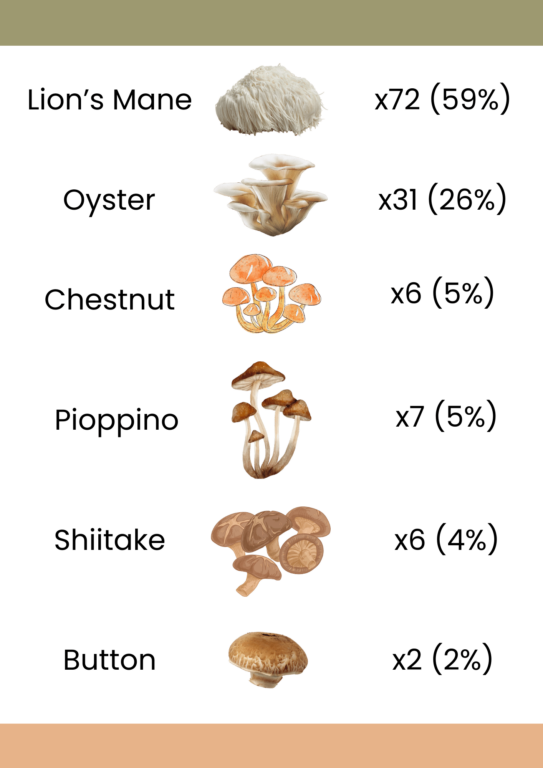
Related: 9 Best-Tasting Mushrooms to Grow & What They’re Like
What is the second most popular mushroom?
Offering a variety of items, rather than the one and only ‘best-selling’ type of mushroom, is often more attractive at a farmers market. And when selling anything it’s vital to know what will be the least amount of work to actually make sales with.
26% of mushroom sellers agree that oysters are the highest in demand, but are second to Lions Mane mushrooms with 59% of votes. Since oyster mushrooms come in a wide variety of unique types, it’s easier to sell a lot in general.
The most popular oyster mushrooms to grow and sell include Italian (Pleurotus pulmonarius), pearl (Pleurotus ostreatus), and blue (Pleurotus ostreatus var. columbinus). Second to those easy-going classics are the golden (Pleurotus citrinopileatus) and pink (Pleurotus djamor) tropical oyster mushrooms.
Most farmers who I’ve spoken to at markets agree that pink oysters aren’t worth selling as they don’t keep fresh for very long. So not only is demand important, but shelf-life.
The growers who voted for oyster mushrooms as the easiest to sell, offer pearl, blue, and Italian above other types.
Lion’s mane
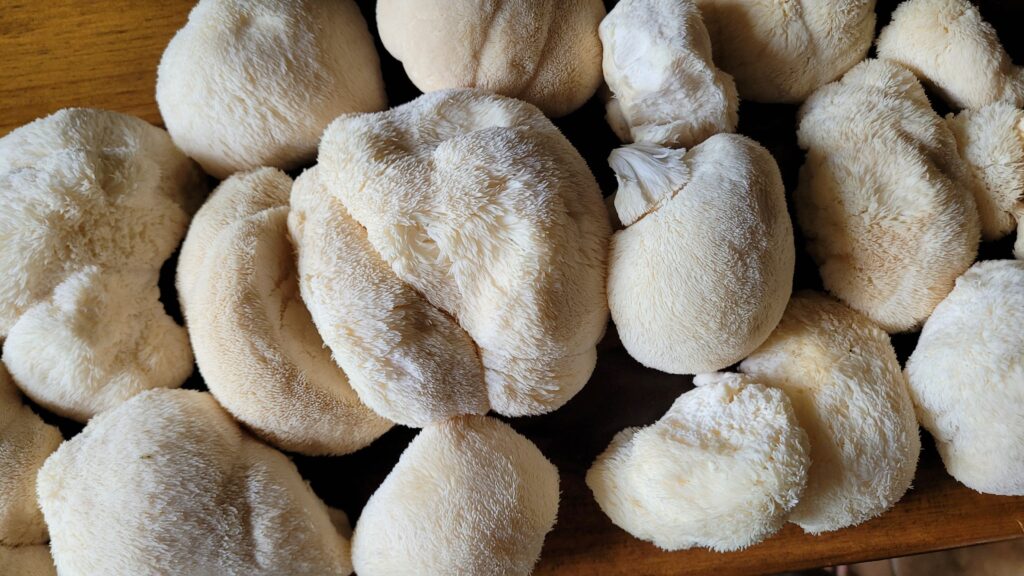
Mushroom sellers blame all sorts of sources for Lions Mane’s popularity.
Paul Stamets, Joe Rogan, Northspore, TikTok, and vegans have all contributed to the rising demand for lions mane mushrooms. In a fresh market setting, they are also popular due to their unique and clean appearance.
Even picky mushroom eaters are intrigued by lions mane simply because they are white! We all know those few people who like mushrooms, but only the white ones.
Each source promotes various reasons why lion’s mane is amazing, so it’s been targeting a very wide audience.
On TikTok, people are showing how they cook a lion’s mane steak, and it looks pretty appetizing, not going to lie. I haven’t pressed a whole head of lion’s mane in a pan as a steak like people are doing, but we totally should.
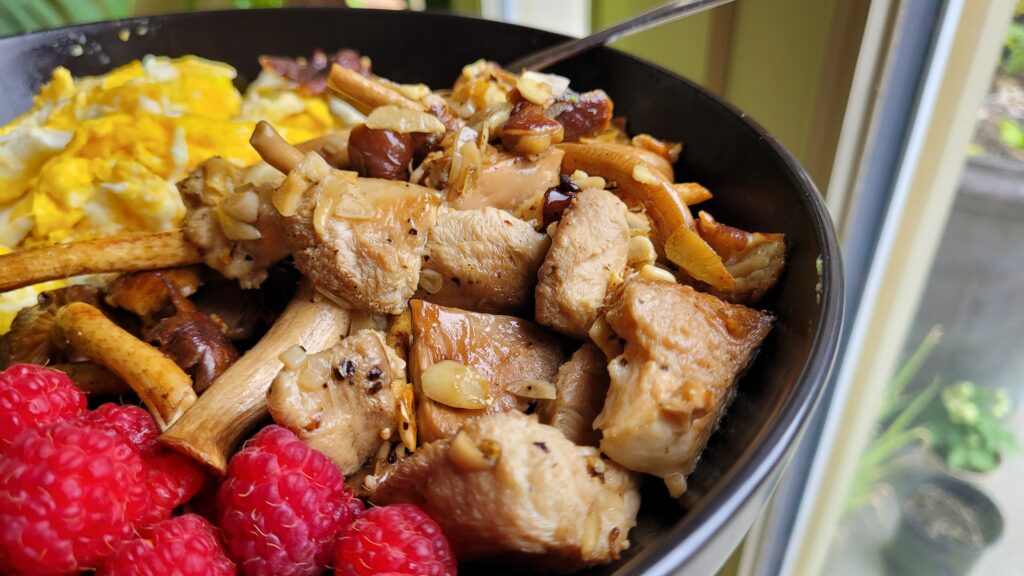
Paul Stamets is a renowned mushroom expert and has been interviewed by Joe Rogan and seen by his massive audience. He talks a lot about mushroom studies and the health benefits of eating mushrooms, such as lions mane.
Northspore is a well-known brand with high-quality products and Youtube guides for growing mushrooms! Many people shop to order their spawn to grow their own lion’s mane using the current Qualityspawn discount code.
Once people get their hands on fresh Lions Mane, they discover how versatile it is—so trying it just once becomes not enough.
Repeat buyers are born. And it’s all thanks to marketing for spreading the word, and the product itself for being amazing.
Oyster
Oysters have been popular in Asia for a long time. With a long-standing history of use, they are generally known in America today and used on occasion by many.
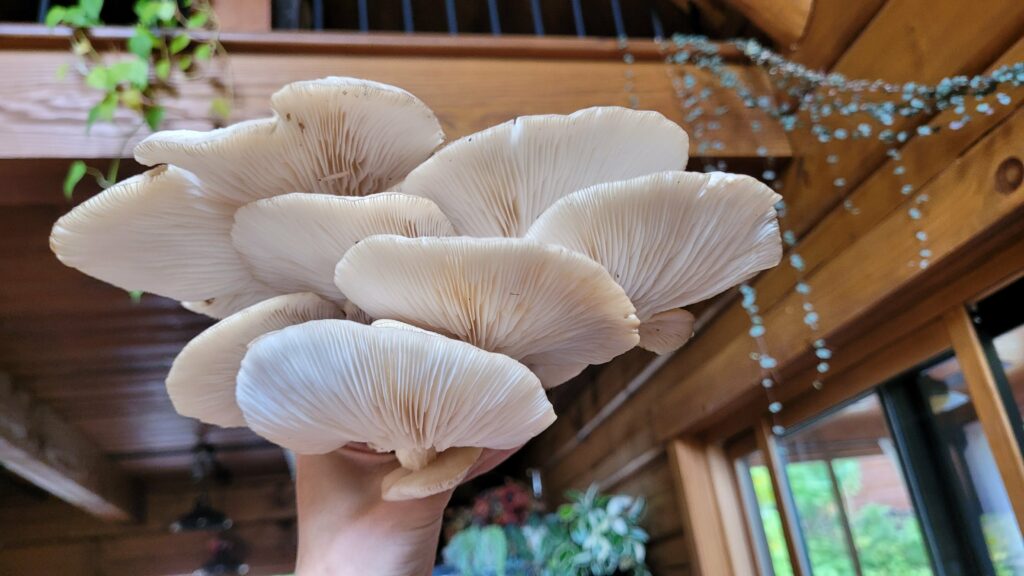
They are known for their meaty texture and sweet, non-mushroomy flavor!
Since oysters have already established themselves as a delightful choice, most consumers buy them every year, seasonally, at markets by default. Many chefs, too, look for quality oyster mushrooms to continue offering their signature dishes.
Several types and colors of oyster mushrooms also intrigue any newcomer. From Gold, pearl, blue, pink, elm, or a thick meaty grey type, called Italian.
As stated above, most buyers find it easiest to grow and sell pearl, blue, and Italian for their longer shelf life. Technically, though, I would categorize that as an “easy to grow” more than an “easy to sell.”
If you line up pink and gold oyster mushrooms beside the boring neutral colors, I’m positive you’ll run out of the colorful ones first! But can you sell them not only before they expire, but without applying consumer pressure to cook them as soon as they get them home?
The unique selling point of oyster mushrooms is their sweet and light flavor and meaty texture. Even picky mushroom eaters tend to ‘go’ for oysters as they are clean- and often white-looking.
Chestnut
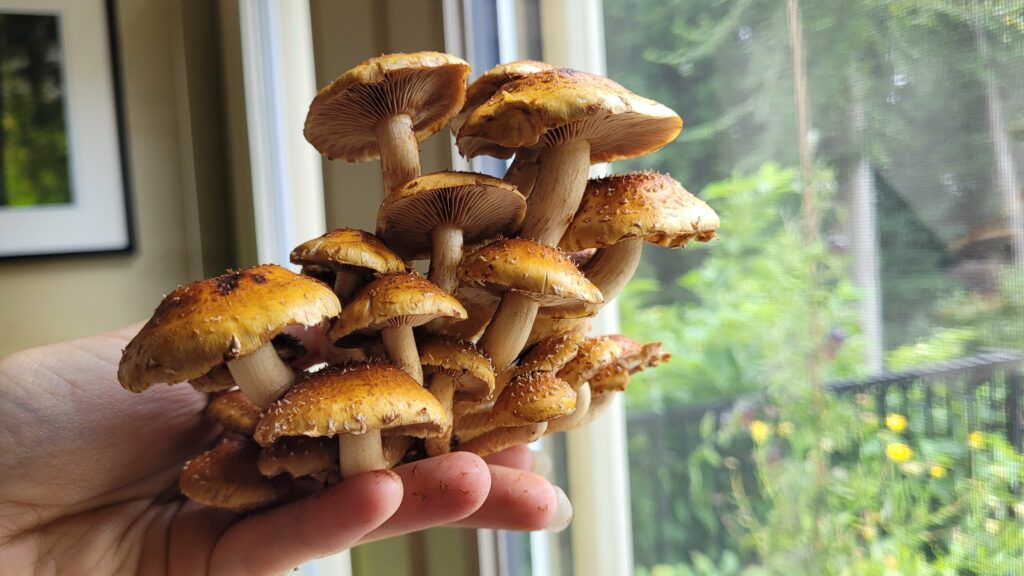
Chestnut mushrooms look like a little home from a storybook popped out and into real life.
Their unique selling point is “I’ve never seen mushrooms like these before.”
So long as you can put them on display, you’ll likely never have enough on hand!
Related: How Much To Sell Mushrooms For (By Region and Type)
Pioppino
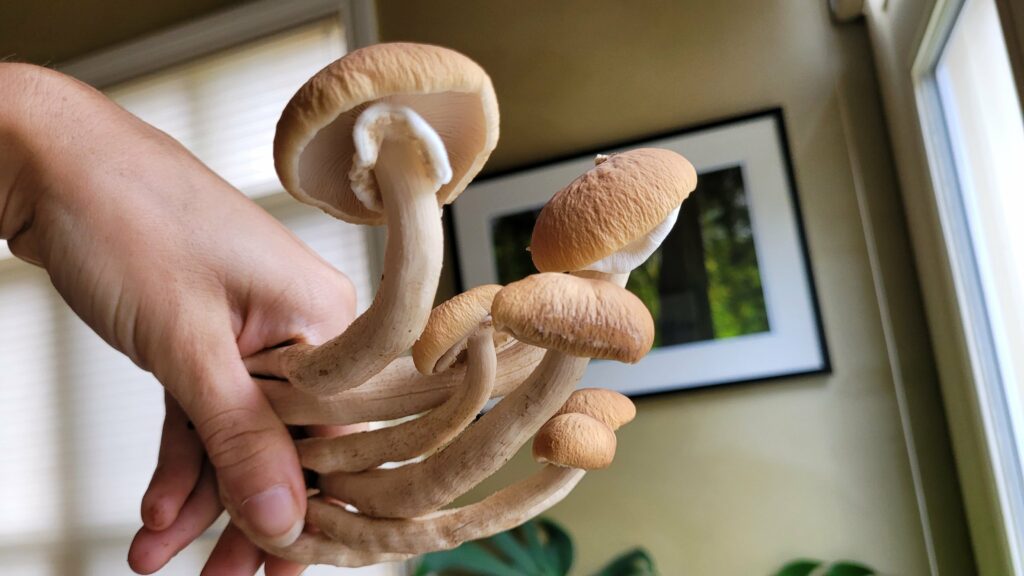
Pioppinos are known as “tea tree” mushrooms in Asia and are generally popular among Asian cultures. These mushrooms are often consumed dry, so finding them fresh is a special treat for people who know of them!
A free sample can go a long way toward helping customers discover the delicious flavor these have.
While they don’t look amazing, their unique selling point is a taste test! Cook up a sample and allow their flavors to shine.
In my experience, pioppino mushrooms are one of the most flavorful, in a good way, I’ve tasted.
Shiitake
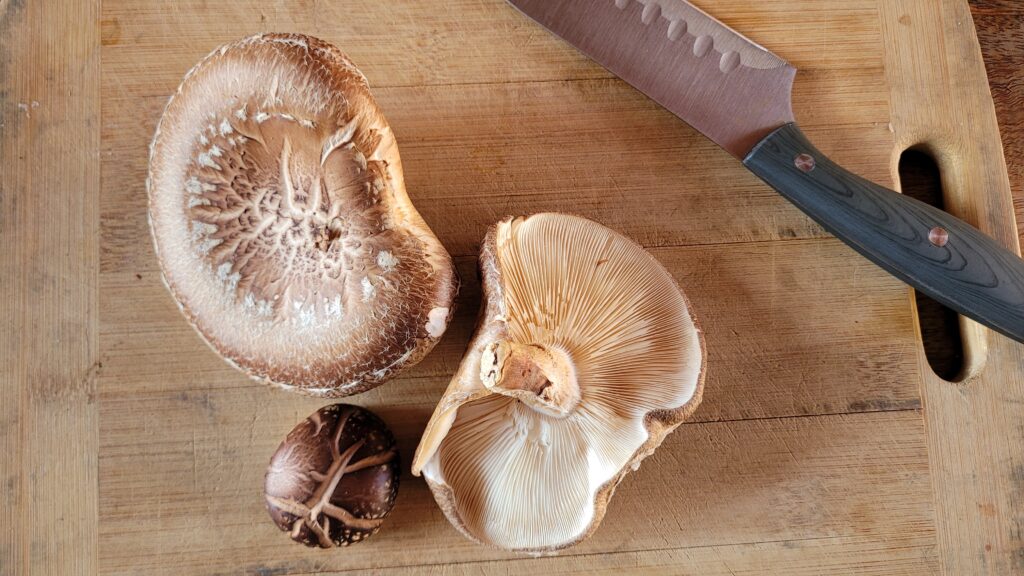
Shiitake mushrooms are also well-known in Asian cultures and have a long history of use for medicinal and culinary purposes.
The primary selling point that makes shiitake an easy seller is that most people already know of them to be very healthy, delicious, and meaty!
Most often these mushrooms are consumed dry as many of the beneficial compounds are enriched during the drying process.
Even grocery stores sell them dried, and seldomly fresh. But for this reason, shiitake mushrooms didn’t make the top of the list. These are offered conventionally down the specialty isles of grocery stores, or in the produce section at specialty health food stores.
Since good prices are hard to beat, and Lions Mane is the current craze, it just isn’t worth it to most small-scale growers to sell shiitake mushrooms right now.
Button mushrooms
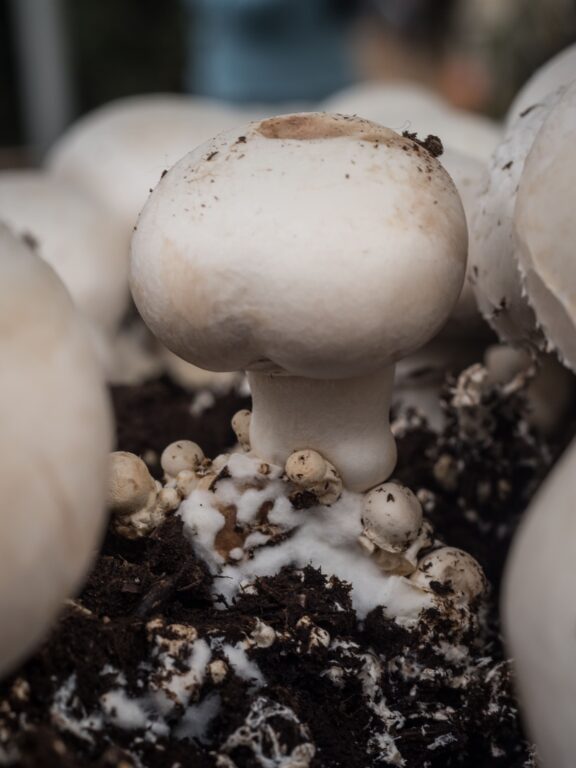
While button mushrooms, in general, are consumed and purchased far more than any other mushroom on this list, they aren’t the best-sellers for small growers for a few reasons.
Button mushrooms are mass-produced and offered at a very low cost in grocery stores so it isn’t worth your time to grow and sell to a local market. If you sold button mushrooms, you’d need to list them at a higher price to break even and locals are more likely to choose not to buy them from you.
Although supporting local farms is a priority of many, most people don’t go to local markets to find higher prices for the same items they get year-round. They go to markets to find unique items at a price they are worth since they are most often seasonal and not conventionally offered.
Conclusion
It turns out that while most people “know of a mushroom” they are willing to try new things. New things that, particularly, look interesting!
Once tried, they’ll either taste the next eye candy or be hooked on the first and be back for more.
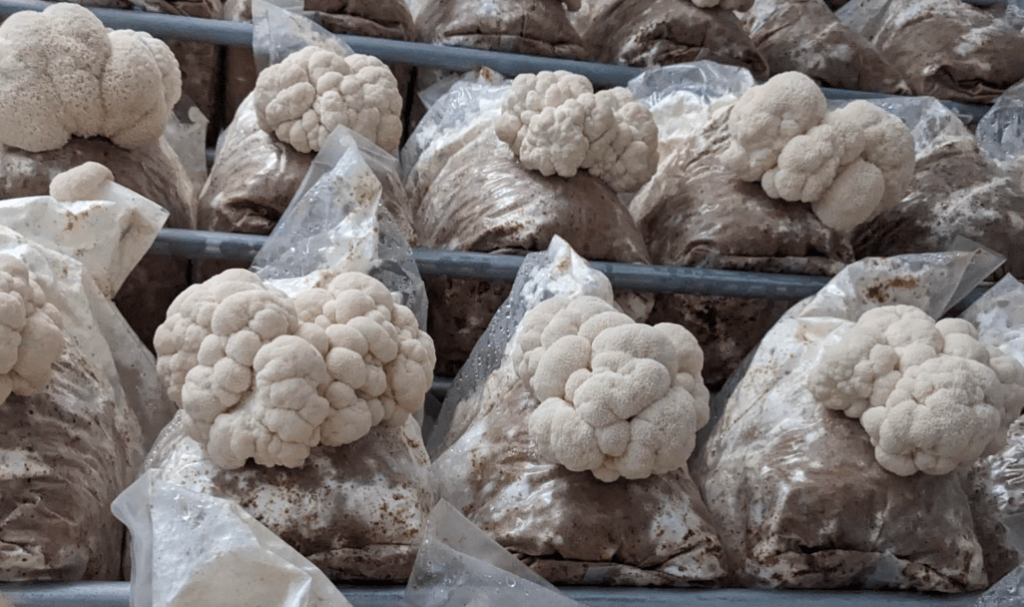
Up next: 4 Fail-Proof Mushrooms to Grow Outside
Recent Posts
There’s no shortage of full-sun ground covers for zone 4 climates! Each plant in this list can withstand the frigid temperatures and also enjoy the hot sun in summer. Full sun means that a plant...
There's no shortage of full sun ground covers, not even in zone 3! Zone 3 climates offer hot but short-lived summers and very cold winters. So each plant in this list can withstand the frigid...
